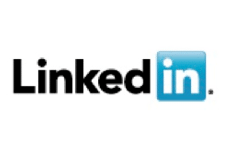The most important section in your resume after your contact information (remember, wrong details, goodbye dream job) is your work experience. When written well and direct to the point, this section would automatically propel you to the hiring manager’s Most Wanted list. However, although others name this section Professional Experience and Work Experience, there are some who name it Work History. Are there any differences?
Actually, there are.
While Professional Experience is used to detail your tenure with companies and organizations wherein which you were paid; Work Experience is used to include all relevant job experiences, whether you were paid or you simply volunteered.
On the other hand, Work History is a detailed report of all the jobs you have worked on, regardless of relevance to your current pursuit. Also, under Work History, you must include all the company names, job titles, and dates of employment. Prospective employers usually ask for your work history for them to verify the accuracy of the information you have given them. With your work history, they would also be able to make background checks on you by contacting the companies you have listed where you have worked for.
Please take note that most job applications require at least a partial work history, while some on the other hand require a full work history, which includes all your experiences as an employee. Therefore, you need to have a strong and solid work history which would transform you from a mere doer to an accomplished achiever.
Aside from the names of all the companies that you have worked with, your job titles, and the dates of employment; a prospective employer might also ask about compensation, salary, and benefits you have received throughout your career. He/she might ask you to describe a particular job, including your duties and responsibilities. Since a work history should be written short to enable a reviewer to quickly get the necessary information, be prepared in advance on what to say. It might be during the interview that the hiring manager would ask you about the additional information.
Be aware that there are a handful of applicants who tend to fabricate their work history, probably because of employment gaps or they forgot certain experiences in the past. A work history should be accurate, since hiring managers could check your background in a heartbeat. Since references are normally not included in the resume anymore, most employers would ask for certain details about the people you have indicated as your references upon calling them. Asking their job position and certain dates would make them ascertain whether or not the information you provided is in accordance with the information given by your references.
As said before, when career gaps occur, be able to explain them. Make sure the reasons are legitimate, or else hiring managers would see you in a negative light. Note that they could be easy to judge when they see an unexplained career gap glaring at them in your work history. Without valid explanation, they might assume that a gap reflects a period in your employment history which did not go well; which would definitely depict you in a not-so-good way.
